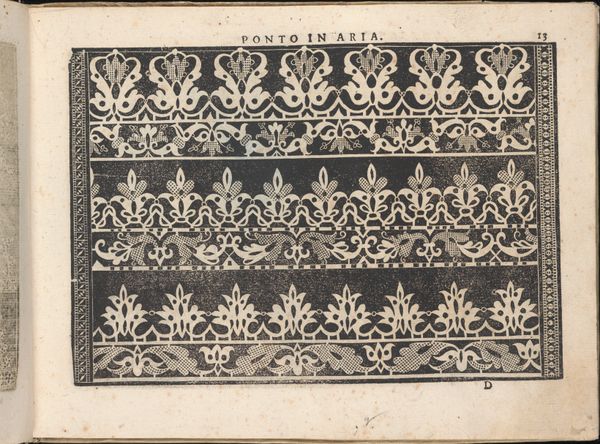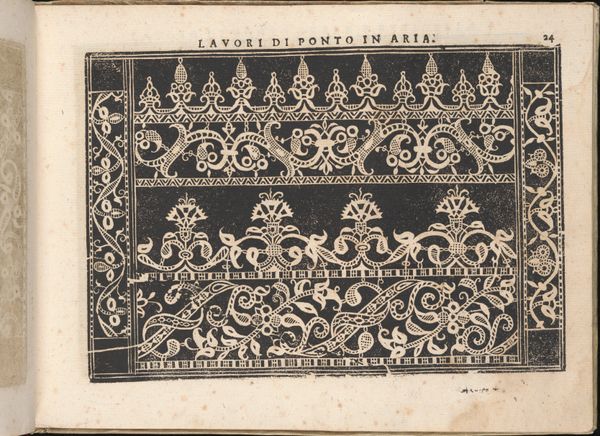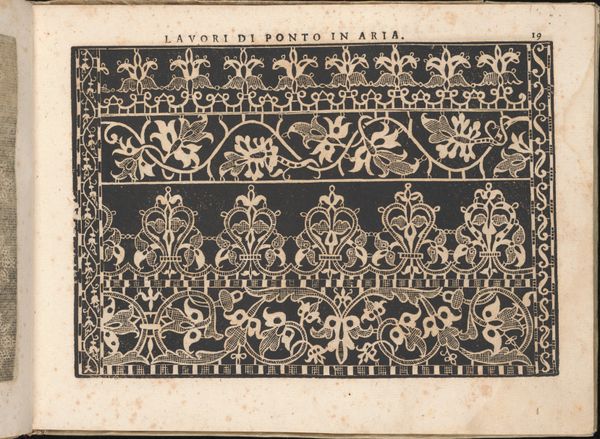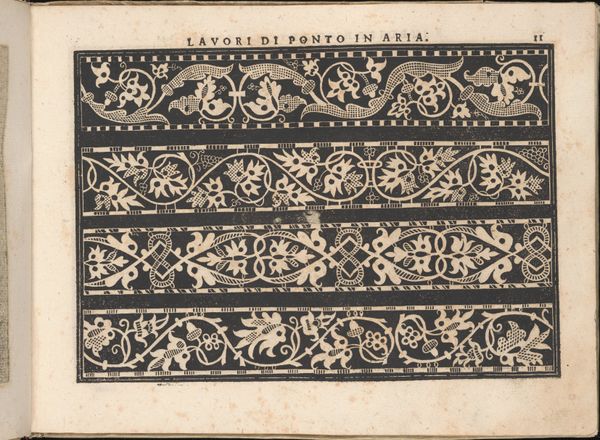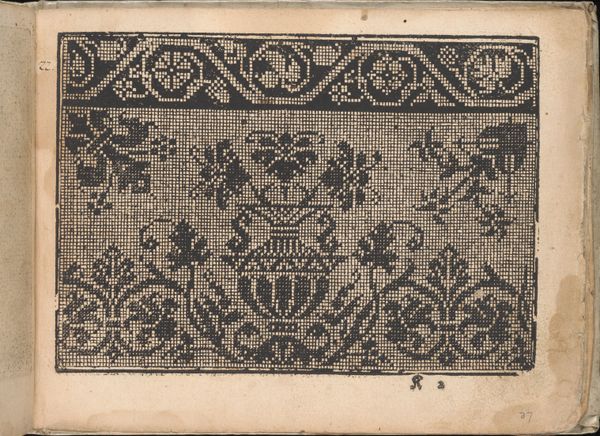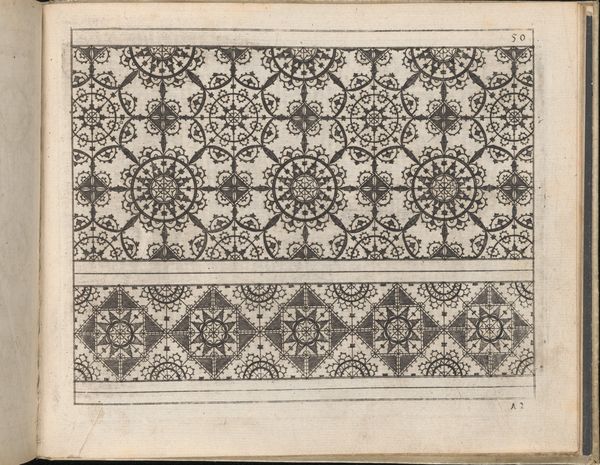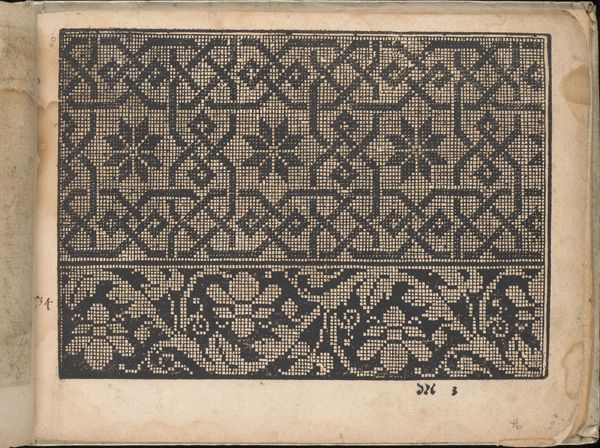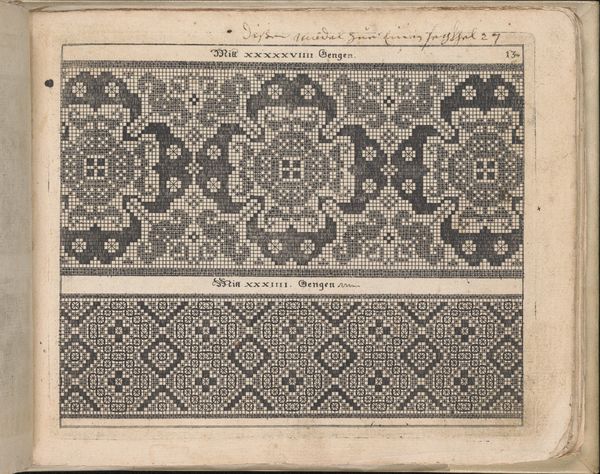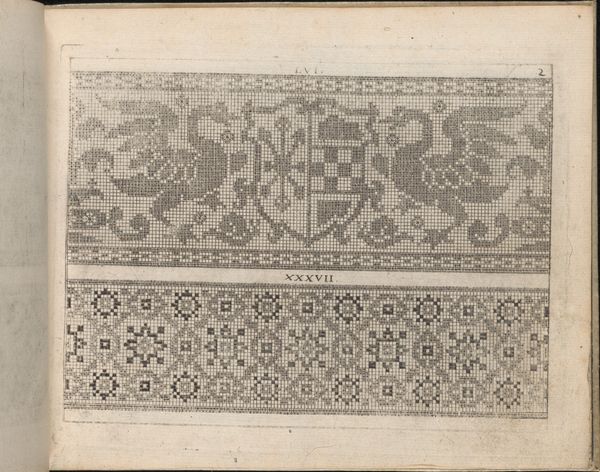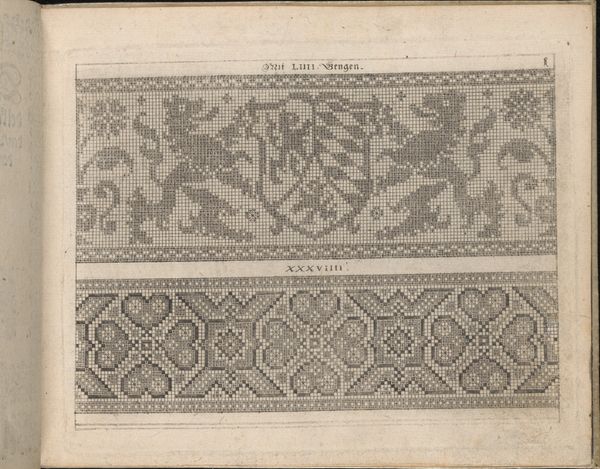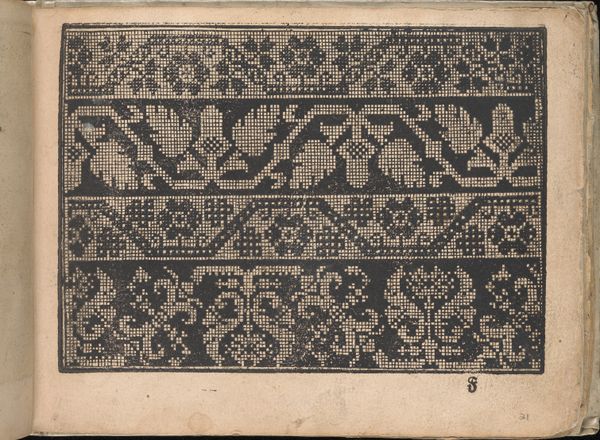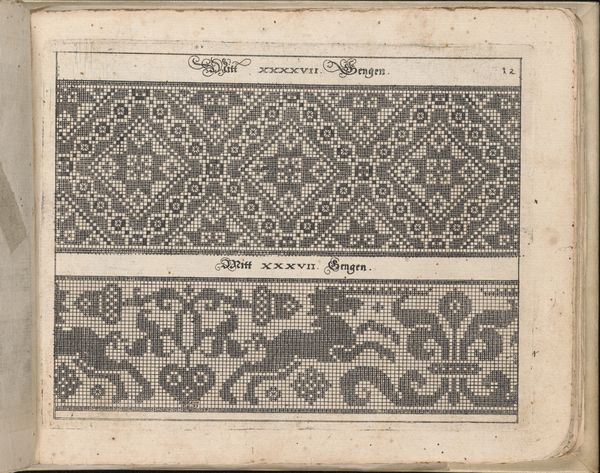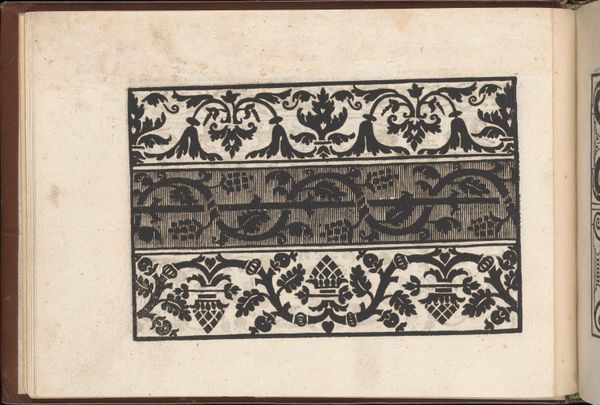
Fiore D'Ogni Virtu Per le Nobili Et Honeste Matrone, page 15 (recto) 1610
0:00
0:00
drawing, print, engraving
#
drawing
# print
#
line
#
italian-renaissance
#
engraving
Dimensions: Overall: 7 7/8 x 10 1/4 in. (20 x 26 cm)
Copyright: Public Domain
Editor: Here we have a page from Isabella Catanea Parasole’s “Fiore D'Ogni Virtu Per le Nobili Et Honeste Matrone,” created around 1610. It’s a striking engraving filled with intricate lacework designs. It feels almost like a coded language. What do you see in this piece? Curator: Beyond its aesthetic beauty, I see a reflection of cultural memory, particularly regarding women’s roles. Lace, during the Renaissance, wasn't merely decoration. It signified status, skill, and even piety. These patterns acted as symbolic blueprints, communicating values and social standing. The title of the book itself suggests a guide to virtue, associating these designs with notions of nobility and honor. Editor: That’s fascinating. So, you're saying the designs weren't just pretty patterns but also tools for encoding and transmitting societal expectations? Curator: Precisely. Look at the repeating motifs. What do they evoke in you? The symmetry, the floral elements... these speak to the controlled, cultivated nature expected of women at the time. Each carefully placed swirl or geometric shape serves as a reminder, a visual cue, embedding ideals into the everyday practice of needlework. They ensured cultural continuity. Editor: I never thought about it that way. I just saw them as…patterns! But now, I see that they were more than ornamental; they played an important cultural role. Thanks for sharing. Curator: My pleasure! It highlights how art, even seemingly minor forms like lace patterns, can reveal profound insights into our shared cultural inheritance.
Comments
No comments
Be the first to comment and join the conversation on the ultimate creative platform.
